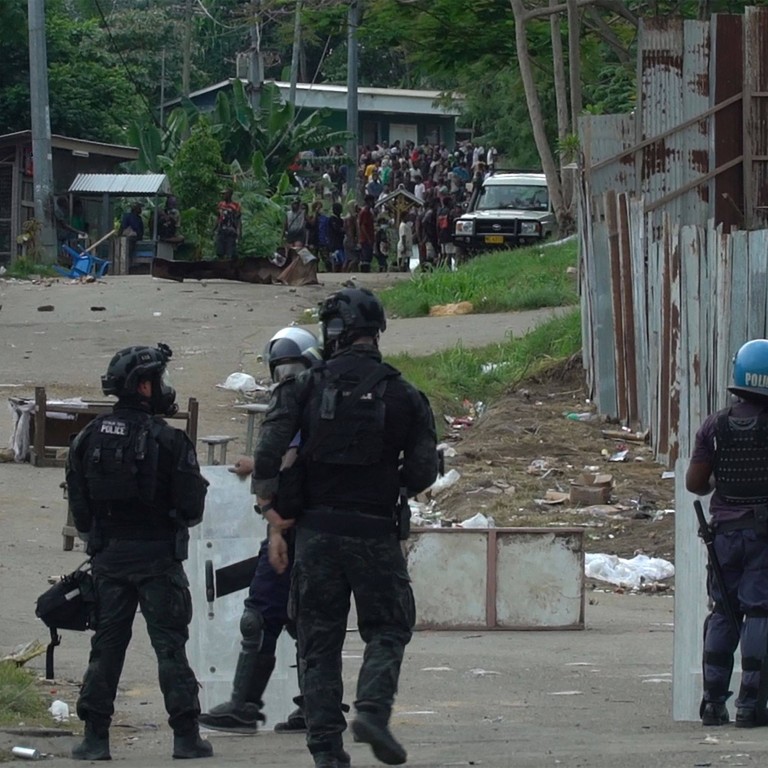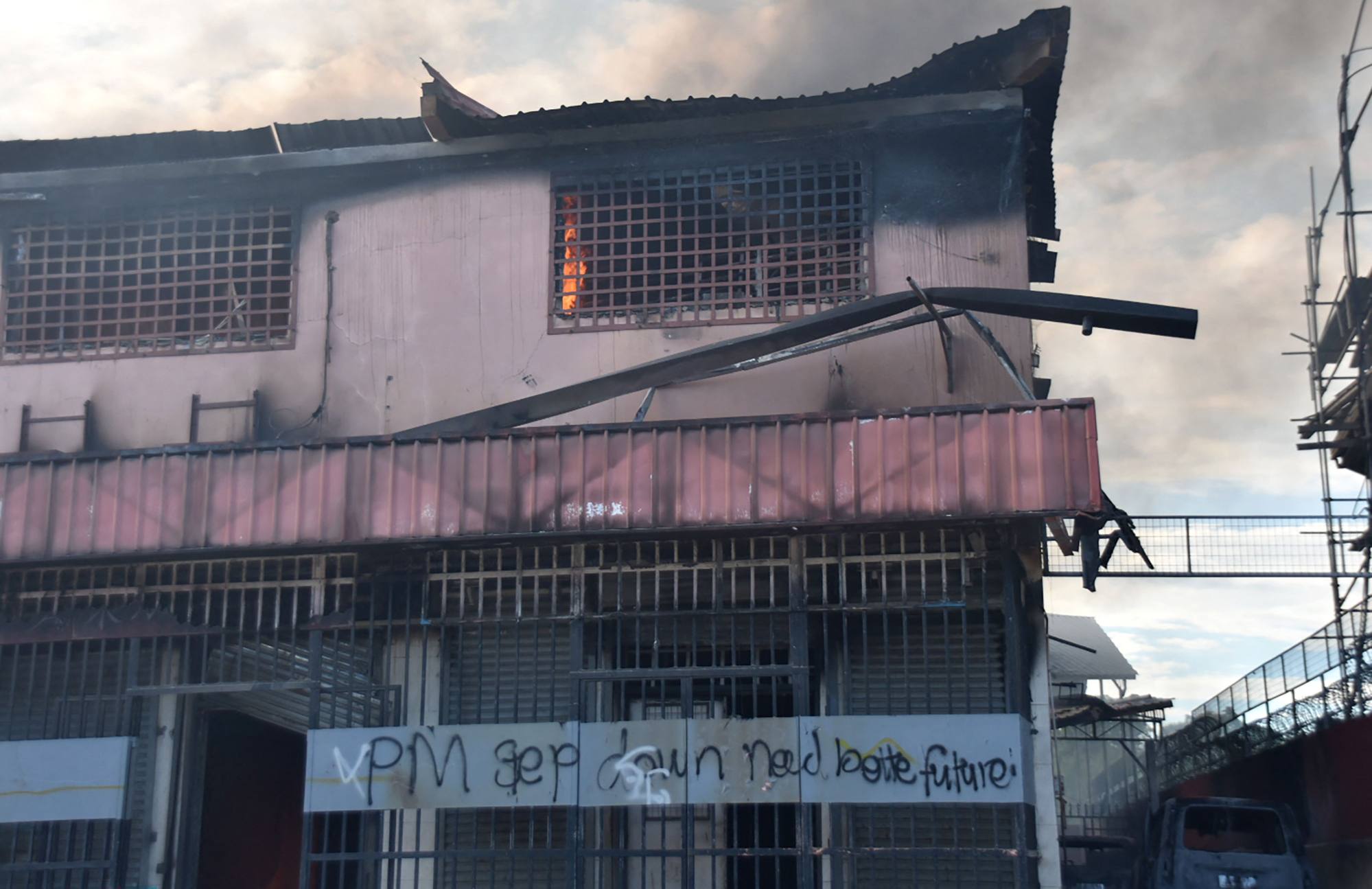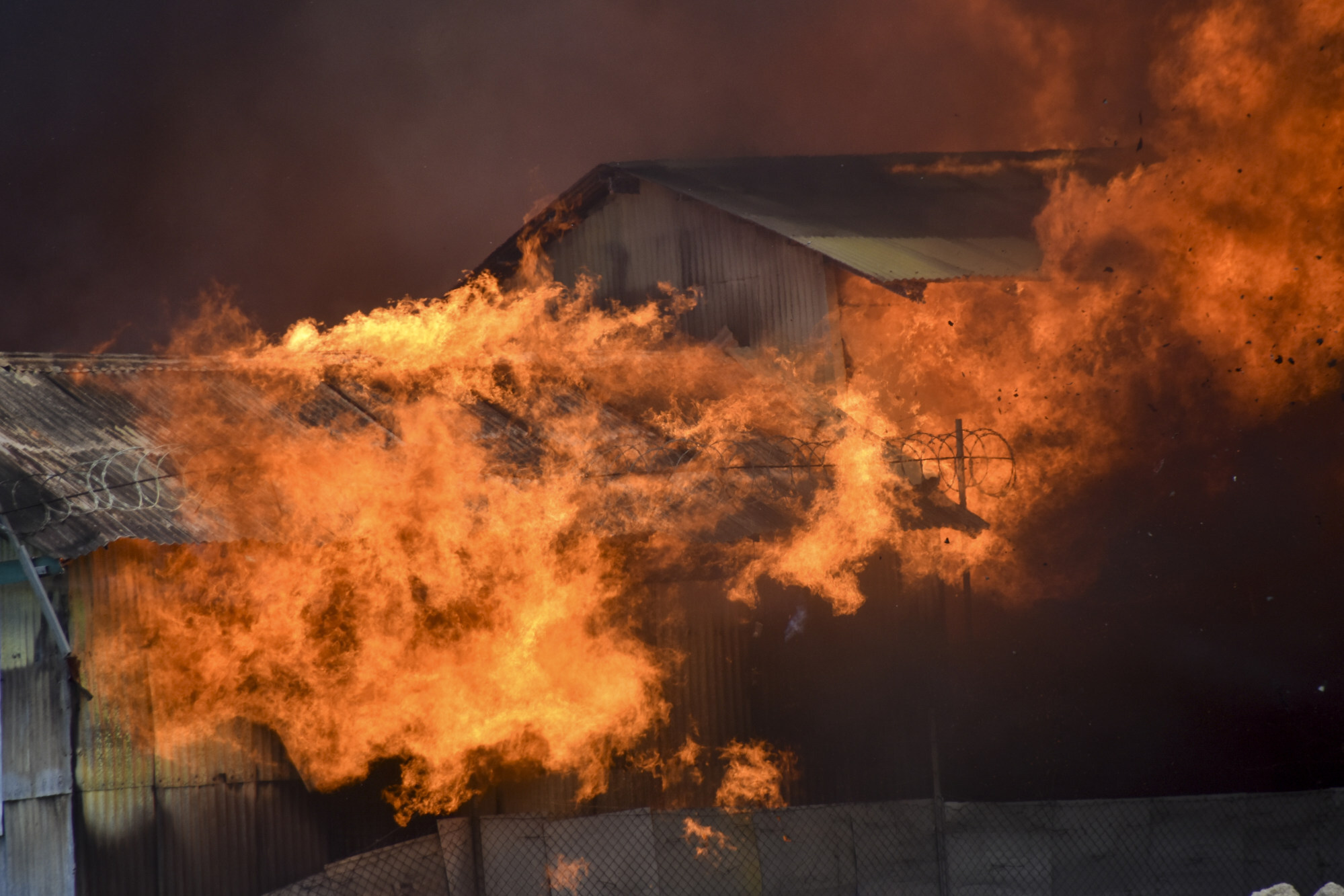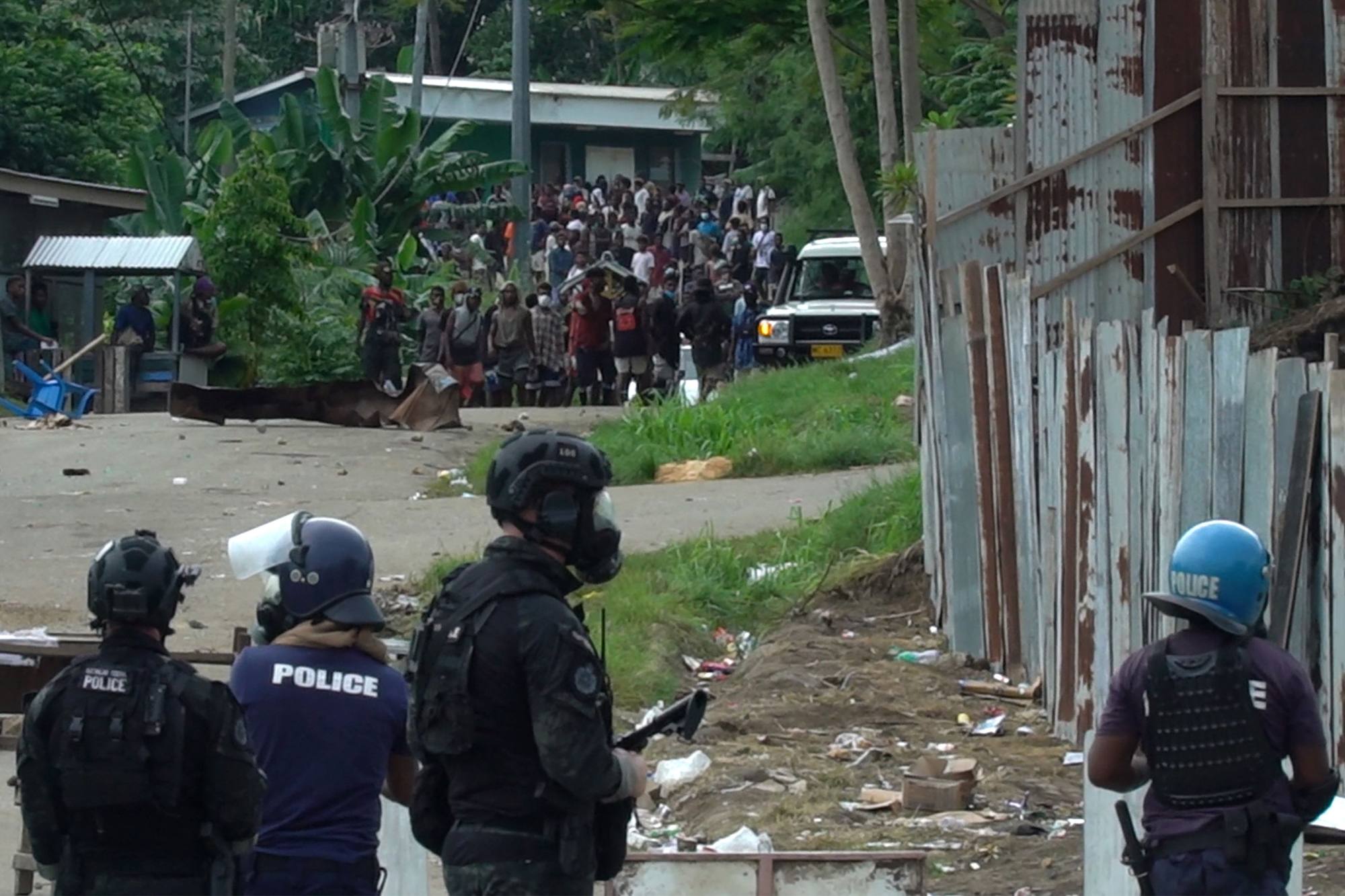
Solomon Islands brings in nighttime curfew in capital Honiara after third day of violence
- Earlier 36-hour lockdown was ignored; pro-Beijing leader Sogavare resists calls for resignation; Australian police, soldiers there to help restore order
- Unrest partly a result of frustrations with government, unemployment, worsened by pandemic; ‘most people on one meal a day’
Police fired warning shots and tear gas to scatter rioters who marched on the house of embattled leader Manasseh Sogavare in the east of the usually sleepy seaside capital.
The mob set fire to at least one nearby building before being driven back towards the city centre, witnessed by AFP reporters.
Later, freshly arrived Australian police and soldiers moved to restore order, protecting critical infrastructure and providing a highly visible and heavily armed presence on the streets.
As rain fell in the early evening, local authorities moved to stamp out the embers of violence, declaring a nighttime curfew in Honiara that will remain in force “until revoked”.
Mobs had ignored an earlier 36-hour lockdown, with thousands of people, some brandishing axes and knives, roaming through the city’s Chinatown, Point Cruz and business districts.

The explosion of violence is partly a result of frustrations with Sogavare’s government and chronic unemployment, made worse by the pandemic.
“Most people are barely getting one meal a day, there are no tourists and very little economic stimulus,” said Douglas Kelson, chief officer at St John Ambulance Service.
“People do things they normally wouldn’t when they are hungry,” Kelson said, although he had seen very few injuries.
After three days of mayhem, large areas of the capital were charred by flames even if the rioters ignited fewer blazes than on previous days.
Unrest mounts in Solomons’ Chinatown as Australian forces secure airport
The scorched-black shells of buildings lined one fire-scarred street and three incinerated trucks were left stranded in the road as young men walked past.
“We are living in fear,” said resident Josephine Teakeni.

Solomon Islands Red Cross secretary general Clement Manuri said Australian police had helped to disperse rioters armed with rocks outside his office.
Many of those in the streets lived in informal settlements near Chinatown and had been drinking alcohol, Manuri said.
In Chinatown itself a large warehouse was set alight on Friday, causing an explosion that sent scores of people fleeing from the scene in panic.
Solomon Islands PM faces calls to resign over China diplomatic ties
A tobacco warehouse was also torched as smoke from previous days’ fires cast parts of the devastated city of 80,000 people in an acrid haze.
The overrun Royal Solomon Islands Police Force said they had made just two arrests, despite two police stations being among the many buildings burned.

Around 100 Australian peacekeepers arrived overnight, just hours after Sogavare begged neighbours for urgent help.
Sogavare told his Papua New Guinea counterpart James Marape in a letter that “certain elements” had “attempted to overthrow a democratically elected government” and called for peacekeepers to be sent for a “period of three to four weeks”.
Papua New Guinea agreed to send 34 peacekeepers to help staunch the violence.

In an address to the nation Sogavare told citizens the Solomons had been “brought to its knees” by the rioting, but vowed to resist calls for his resignation.
The pro-Beijing leader claimed foreign powers opposed to his 2019 decision to switch the Solomons’ diplomatic allegiance from Taiwan to China were behind the disturbances.
Experts say the crisis has also been fuelled by long-standing animosity between residents of the most populous island Malaita and the central government based on the island of Guadalcanal.

The archipelago nation of around 700,000 people has for decades endured ethnic and political tensions.
Malaita residents have long complained that their island is neglected by the central government, and divisions intensified when Sogavare recognised Beijing in 2019.
China’s government on Friday condemned the violence and vowed to “safeguard the safety and legitimate rights and interests of Chinese citizens and institutions”.

.png?itok=arIb17P0)
